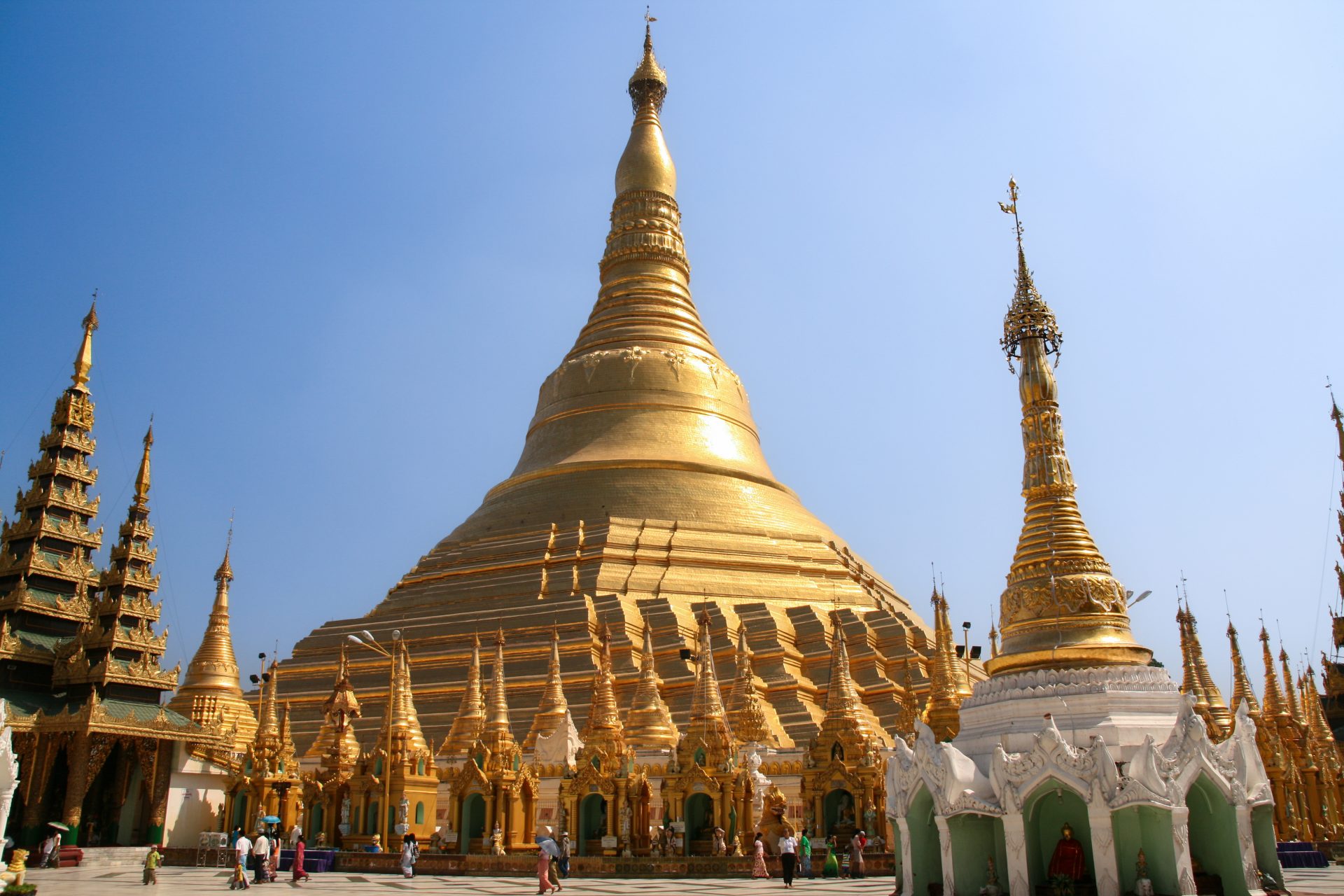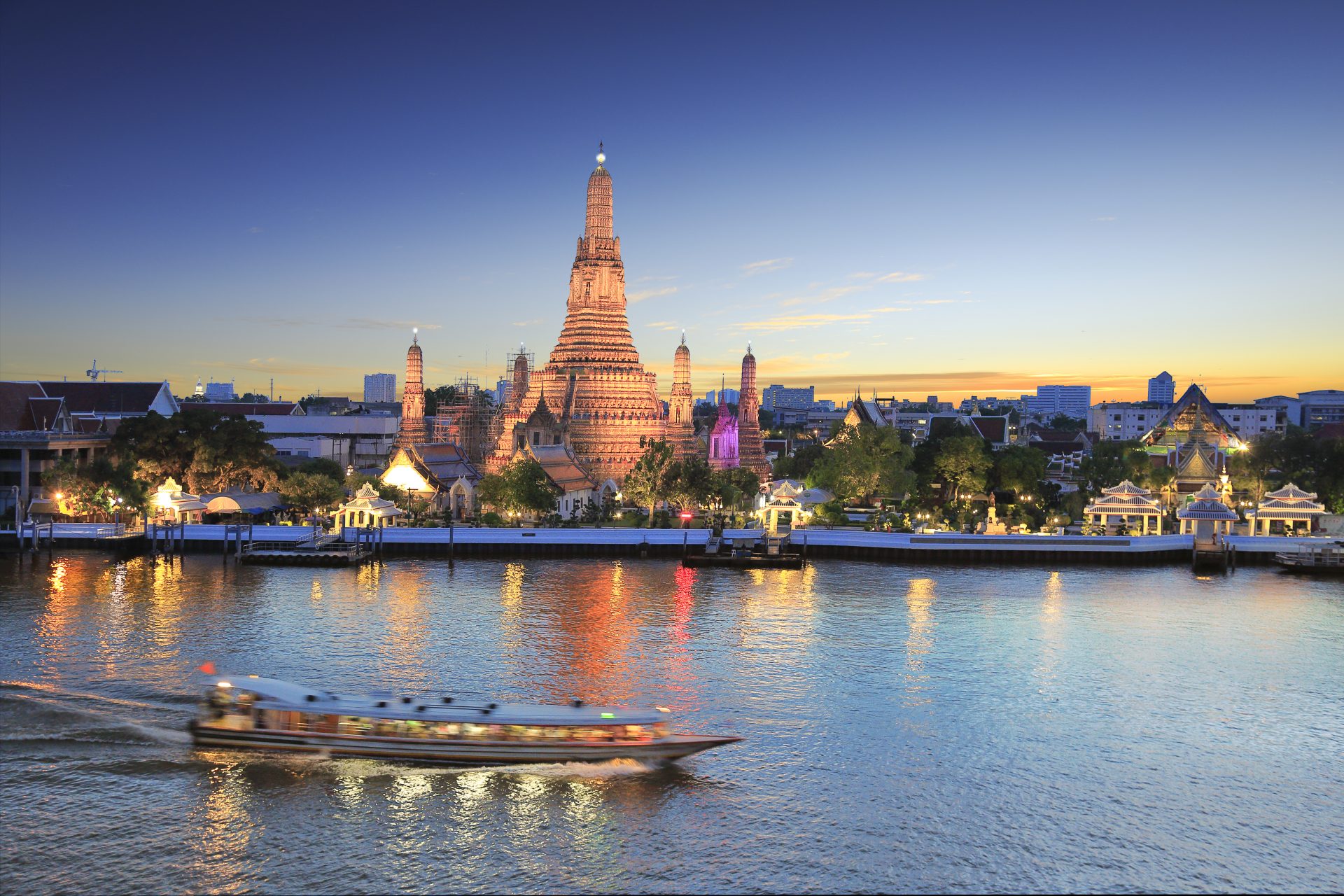The most impressive Buddhist temples in the world
Buddhism is one of the world's oldest major religions with a vast following of around 520 million people.
Thousands of years after its founding, Buddhism's mark remains not just in culture but also in architecture, through stunning temples like Wat Rong Khun (or the White Temple) and several others we'll explore...
Not everything that glitters is gold, but in this case, it actually is. The entire Pha That Luang temple in Vientiane, Laos, is covered in a thin layer of gold. Constructed in the 16th century, it rose from the ruins of an earlier Buddhist temple. Simply breathtaking.
If you find yourself in Bali, Indonesia, a must-visit is the Ulun Danu Bratan Temple. This temple even features on one of Indonesia's banknotes. Built in 1633, it sits on the shores of Lake Bratan and at the foot of Mount Batur, offering a picture-perfect view.
In Mahabodhi, India, you'll find this brick temple that stands out with its central tower stretching over 164 feet high. This temple is special because it houses a descendant of the Bodhi tree, under which Buddha is said to have attained enlightenment according to Buddhism.
This stupa-style temple in Java, originally used to house Buddha's relics, is a UNESCO World Heritage Site and is estimated to date back to the 8th or 9th century. After the spread of Islam, it was forgotten and reclaimed by nature until its rediscovery in 1814. It's the world's largest Buddhist temple and a must-visit.
The Shwedagon Pagoda, the oldest in Myanmar (formerly Burma), stands out with its impressive 361-foot-tall structure covered in gold and precious stones. The treasures inside, including a 76-carat diamond, also make it a tempting visit.
Heading to China, in the northeast of Beijing, lies the legendary Yonghegong Temple, one of the most important temples for Tibetan Buddhism. It's known for blending Tibetan elements influenced by Mongolian styles with Chinese aspects.
Ta Prohm, located in Angkor, Cambodia, is straight out of a movie scene. It has graced the silver screen in the 2001 'Tomb Raider' film, among others. Also a UNESCO World Heritage Site, its abandoned state, overtaken by nature, adds to its enigmatic beauty, making it even more captivating.
The Boudhanath Stupa in Kathmandu, Nepal, stands out with its incredible decorative elements and a unique square structure featuring eyes that seem to awaken Buddha, overlooking the four cardinal directions. It's a sight that evokes a deep sense of peace and introspection.
Reaching Paro Taktsang in Bhutan is no walk in the park, but it's absolutely worth the effort. This temple complex is perched over 3,000 meters (9,842 feet) high on a cliff face. Definitely not for those who fear heights, but the journey and the view are unparalleled.
The Popa Taung Kalat monastery in Myanmar sits at the mouth of a volcano, offering a scene straight out of a fairy tale. Be ready for a workout, though, as visiting requires climbing no fewer than 777 steps. The effort, however, rewards you with breathtaking views and a spiritual aura that's hard to match.
In Thailand, in the town of Chiang Rai, lies Wat Rong Khun or the White Temple. Reconstructed in 1996, it now commands a visit for its stunning aesthetic and incredible ornamental elements. According to belief, the bridge leading to the temple represents the same path Buddha crossed to preach his teachings for the first time.
One of Myanmar's top tourist attractions is undoubtedly the temples of the Bagan Valley, the ancient capital of the Burmese empire. Nearly 4,000 Buddhist temples spread over 16 square miles delight visitors. Among the most famous is the largest of them all: Dhammayangyi Pahto, built in the 12th century. This area offers a mesmerizing journey back in time, surrounded by architectural marvels that have withstood centuries.
Among the Buddhist temples in China, the Shaolin Temple stands out with its rich history of over 1,500 years. Known as the birthplace of Zen Buddhism and, for many, Kung Fu as well, it's not just a temple but a cornerstone of martial arts and spiritual discipline.
In Bangkok, the capital of Thailand, you'll find Wat Arun, famous for its towering spire built in 1768 and later expanded in the 19th century. An interesting tidbit: parts of the temple's interior are adorned with seashells and pieces of porcelain from ancient ships, adding to its unique charm.
The spiritual heart of Lhasa, the capital of Tibet, beats in the Jokhang Monastery, nearly 1,400 years old. Inside, it houses an image of a young Buddha and serves as a pilgrimage site for monks, making it a place where spirituality is palpable with every step.
The Temple of Heaven, or Pinyin Tian Tan, erected in 1420, is a fascinating blend of architectural symbolism with its square-earth and circle-heaven motifs. Located in Beijing, China, it was the place where emperors would pray for bountiful harvests, merging divine aspirations with earthly responsibilities.
This Buddhist temple in Nara, Japan, is renowned for housing the world's largest wooden Buddha statue, despite being 33% smaller than the original due to past fires. Todai-ji is not just a temple; it's a monumental testament to architectural ingenuity and spiritual reverence.
Follow Showbizz Daily to stay informed and enjoy more content!






























